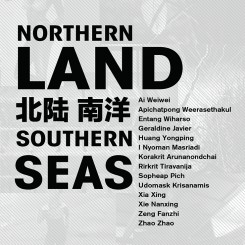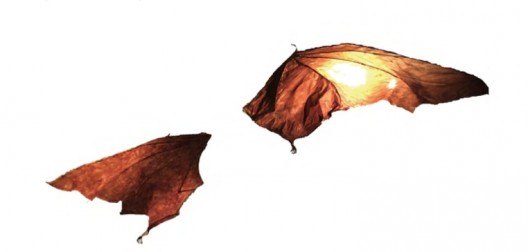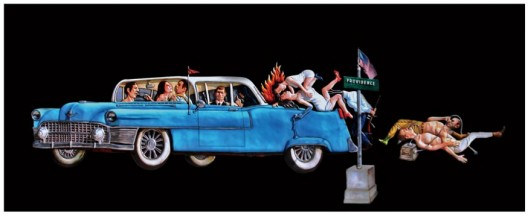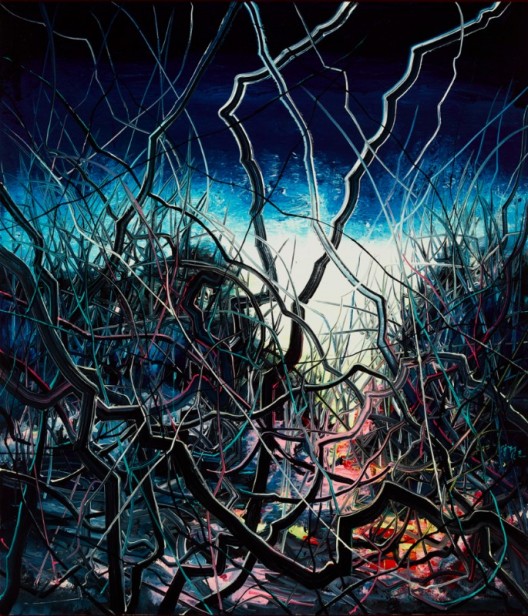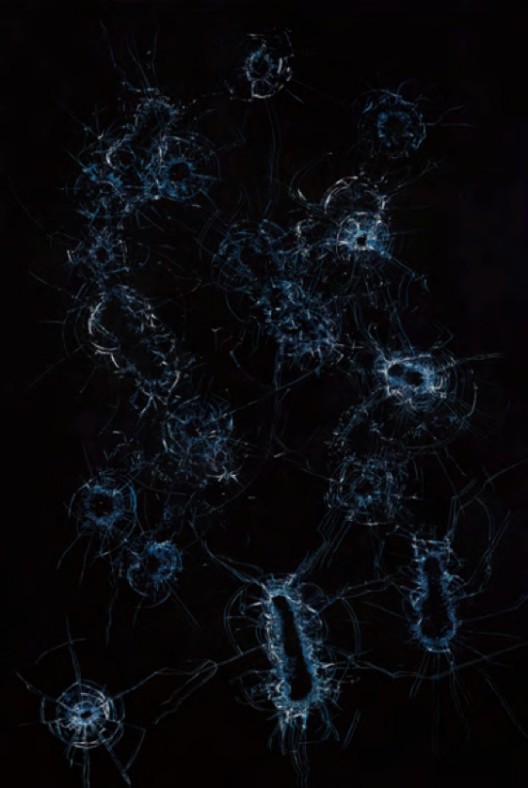[Press Release]
September 20th – October 30th, 2016
Tang Contemporary Art is proud to unveil its new Bangkok gallery. The inaugural exhibition, “Northern Land, Southern Seas,” will bring together the work of more than a dozen contemporary art heavyweights from China and Southeast Asia.
“Southern Seas” was China’s name for Southeast Asia in the Ming and Qing dynasties, reflecting a China-centric view of the world. Shifting perspective, Southeast Asian countries viewed China as the “Northern Land.” The exhibition is called “Northern Land, Southern Seas” to juxtapose these two viewpoints and shift away from regionalism; we have brought together top Chinese and Southeast Asian artists in a welcoming and equal space to present and discuss their work.
Tang Contemporary Art is pleased to present fourteen outstanding artists from China and Southeast Asia, including Ai Weiwei (China), Apichatpong Weerasethakul (Thailand), Entang Wiharso (Indonesia), Geraldine Javier (Philippines), Huang Yongping (China), I Nyoman Masriadi (Indonesia), Korakrit Arunanondchai (Thailand), Rirkrit Tiravanija (Thailand), Sopheap Pich (Cambodia), Udomsak Krisanamis (Thailand), Xia Xing(China), Xie Nanxing (China), Zeng Fanzhi (China), and Zhao Zhao (China).
Ai Weiwei is active in architecture, art, photography, and social and cultural criticism. In 2011, ArtReview named Ai Weiwei the world’s “most powerful artist.” In June 2015, Tang Contemporary Art held “Ai Weiwei,” the artist’s first solo exhibition in China. In October that same year, he also held the solo show “Wooden Ball” in Hong Kong.
Apichatpong Weerasethakul is an internationally-renowned independent film director, screenwriter, producer, and artist. In 2008, he was awarded the Chevalier de l’ordre des arts et des lettres by the French government. His Uncle Boonmee Who Can Recall His Past Lives won the Palme d’Or at the 63th Cannes Film Festival in 2010. In 2012, Weerasethakul participated in Documenta, and he was named one of the five finalists for the Hugo Boss Prize given by the Guggenheim Museum. He has recently been invited to hold a solo exhibition at the Tate Modern in London.
Indonesian artist Entang Wiharso began with painting, but later expanded to sculpture, installation and video. His work deeply probes the influence of important social and political forms on the individual, presenting the myriad faces of humanity and society from the perspectives of love, hate, fanaticism, religion, and ideology.
Huang Yongping is one of the most important artists in Chinese contemporary art; he helped to found the art group Xiamen Dada (1986). He moved to Paris in the late 1980s and became active in the international art world. His philosophical-aesthetic thinking, always singularly independent, and sometimes even nihilistic, strongly highlights the crucial role of skepticism, with which the artist defies the rationalist and anthropocentric hegemony. In 2016, Huang Yongping won the 22nd Wolfgang Hahn Prize and was commissioned to create work for Monumenta at the Grand Palais.
Korakrit Arunanondchai was born in 1986 in Thailand. After graduated from Columbia University. Arunanondchai held a solo exhibition at MoMA PS1 in 2014, and solo shows at the Ullens Center for Contemporary Art and the Palais de Tokyo in 2015. He engages a myriad of subjects such as history, authenticity, self-representation, and tourism through the lens of a cultural transplant.
I Nyoman Masriadi’s work is rooted in Indonesian culture and history, and he often depicts superhuman heroic figures, incisively and humorously passing judgment on contemporary life and global popular culture. Masriad’s work has been popular at auction; with a work selling for more than US$1 million, he is among the top living Southeast Asian artists.
Thai artist Rirkrit Tiravanija has shown his work in museums and galleries around the world, including the Musée d’Art Moderne de la Ville de Paris, the Serpentine Gallery in London, and the Museum of Modern Art in New York. In 2003, he participated in the 50th Venice Biennale and won the Golden Lion Award. In 2004, he received the Hugo Boss Prize from the Guggenheim Museum in recognition of his contribution to contemporary art. Tiravanija is the best representative of relational aesthetics in the last twenty years.
Chinese artist Zeng Fanzhi has held solo exhibitions at numerous museums and galleries, including the Singapore Art Museum, Musée d’Art Moderne de la Ville de Paris, Gagosian Gallery in New York, London, and Hong Kong. In 2009, he was shown at the 53rd Venice Biennale. At the Sotheby’s Hong Kong autumn sale in 2013, Zeng Fanzhi’s The Last Supper was sold for HK$180 million, setting a new world record for Chinese contemporary art. In the 2014 Hurun Art List, Zeng Fanzhi was named China’s“most expensive living artist” for the total sales of his work at auction that year.
As one of the key Chinese contemporary artists born in the late 1980s, Zhao Zhao uses various artistic media to challenge reality and its ideological traditions. In recent years, Zhao Zhao’s provocative and rich artistic practice has received international attention. His exhibitions in China, North America, and Europe have been well-received, and Zhao Zhao is seen as an emerging international artist. In 2014, Zhao Zhao was named one of Modern Painters’ 25 Artists to Watch and one of The Culture Trip’s Top 10 Emerging Chinese Artists. Zhao Zhao’s most important exhibition in a decade, entitled “Zhao Zhao,” is currently being held at Tang Contemporary Art in Beijing.
Founded in 1997, Tang Contemporary Art is headquartered in Beijing, with art spaces in Bangkok and Hong Kong. Since its inception, Tang Contemporary Art has promoted the development of experimental art in various regions. Over the last twenty years, Tang Contemporary Art has held numerous exhibitions and programs, which have played a very important role in the development of Chinese and Southeast Asian contemporary art. This diverse new exhibition announces Tang Contemporary Art Bangkok’s new direction, and we hope that, through close collaborations with top Southeast Asian artists, Tang Contemporary Art will continue to be one of the most professional galleries in Southeast Asia.

